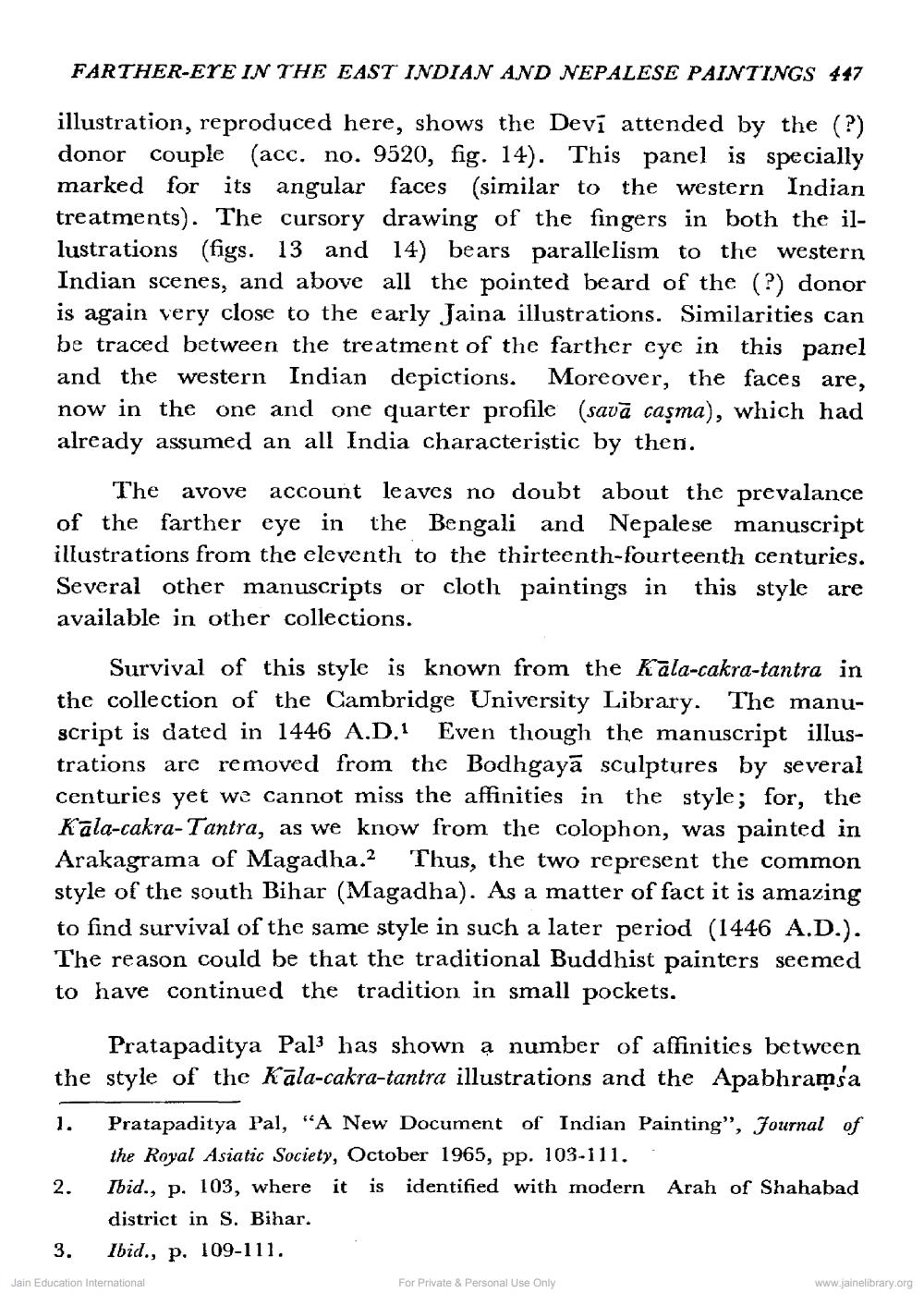________________
FARTHER-EYE IN THE EAST INDIAN AND NEPALESE PAINTINGS 447
illustration, reproduced here, shows the Devi attended by the (?) donor couple (acc. no. 9520, fig. 14). This panel is specially marked for its angular faces (similar to the western Indian treatments). The cursory drawing of the fingers in both the illustrations (figs. 13 and 14) bears parallelism to the western Indian scenes, and above all the pointed beard of the (?) donor is again very close to the early Jaina illustrations. Similarities can be traced between the treatment of the farther eye in this panel and the western Indian depictions. Moreover, the faces are, now in the one and one quarter profile (savā caşma), which had already assumed an all India characteristic by then.
The avove account leaves no doubt about the prevalance of the farther eye in the Bengali and Nepalese manuscript illustrations from the eleventh to the thirteenth-fourteenth centuries. Several other manuscripts or cloth paintings in this style are available in other collections.
Survival of this style is known from the Kala-cakra-tantra in the collection of the Cambridge University Library. The manuscript is dated in 1446 A.D.1 Even though the manuscript illustrations are removed from the Bodhgayā sculptures by several centuries yet we cannot miss the affinities in the style; for, the Kala-cakra-Tantra, as we know from the colophon, was painted in Arakagrama of Magadha. Thus, the two represent the common style of the south Bihar (Magadha). As a matter of fact it is amazing to find survival of the same style in such a later period (1446 A.D.). The reason could be that the traditional Buddhist painters seemed to have continued the tradition in small pockets.
Pratapaditya Pals has shown a number of affinities between the style of the Kāla-cakra-tantra illustrations and the Apabhramsa 1. Pratapaditya Pal, “A New Document of Indian Painting”, Journal of
the Royal Asiatic Society, October 1965, pp. 103-111. 2. Ibid., p. 103, where it is identified with modern Arah of Shahabad
district in S. Bihar. Ibid., p. 109-111.
3.
Jain Education International
For Private & Personal Use Only
www.jainelibrary.org




